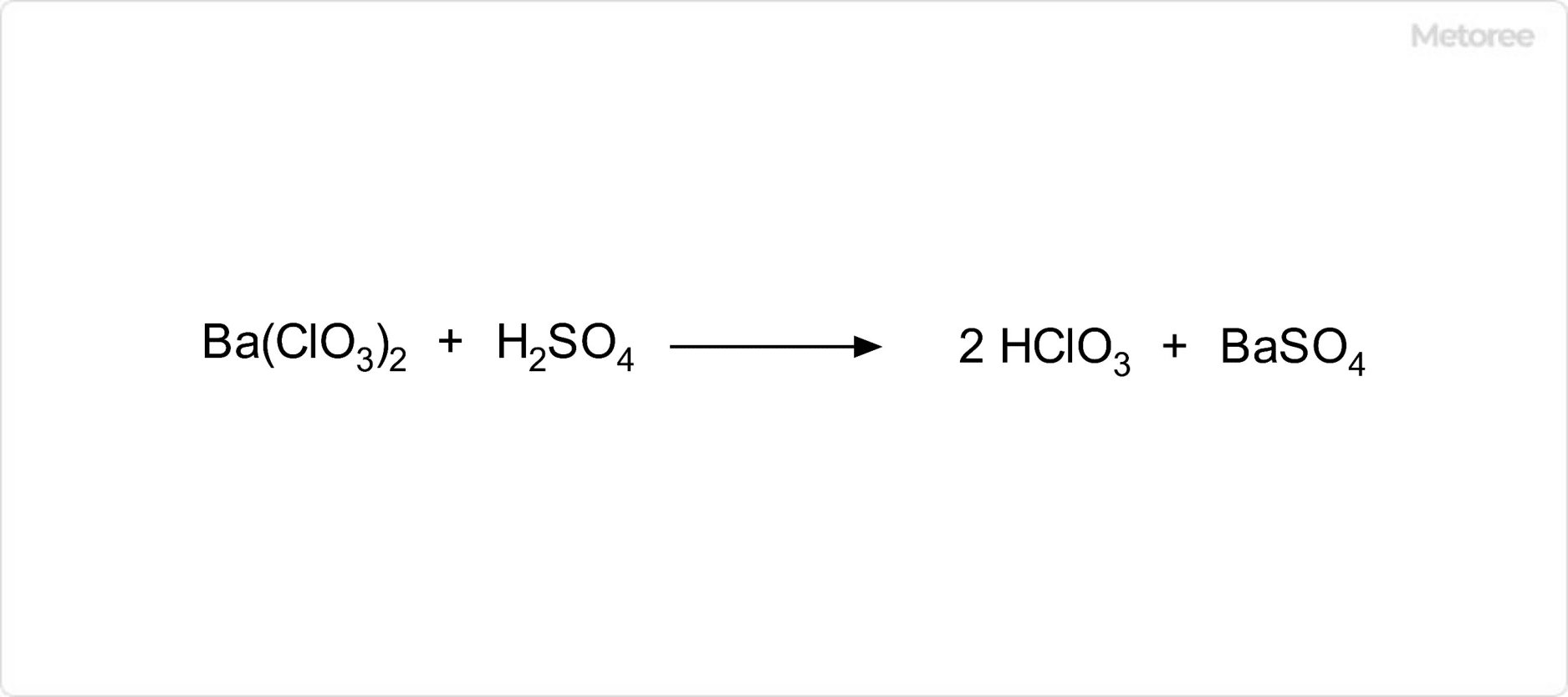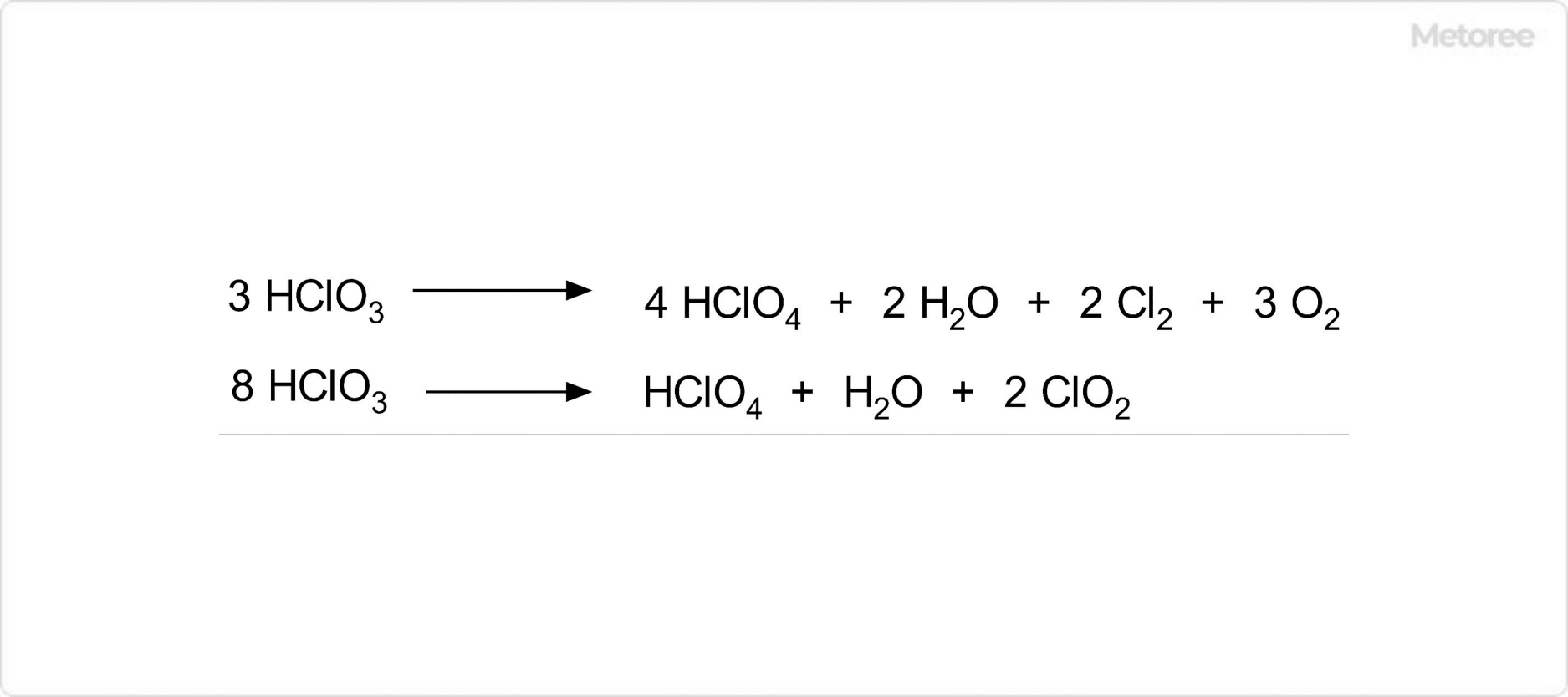All Categories
History





This section provides an overview for chloric acid as well as their applications and principles. Also, please take a look at the list of 6 chloric acid manufacturers and their company rankings. Here are the top-ranked chloric acid companies as of January, 2026: 1.Smolecule Inc., 2.Topan, 3.NINGBO INNO PHARMCHEM CO.,LTD..
Table of Contents
Chloric acid is an oxoacid of chlorine with the chemical formula HClO3.
The CAS number is 7790-93-4. Chloric acid cannot be isolated in its free acid form and is only available as an aqueous solution.
The use of sodium chlorate, a compound related to chloric acid, was banned in the EU in 2009 for herbicidal applications due to its environmental impact.
Aqueous solutions of chloric acid are potent oxidizers and strong acids. They are used industrially as a bleaching agent for pulp and various materials, due to their effectiveness.
These solutions also serve as a raw material for chloric acid salts (such as sodium chlorate, potassium chlorate, ammonium chlorate, zinc chlorate, etc.), dissolving many metals along with their oxides, hydroxides, and carbonates.
Chloric acid salts have been historically used as raw materials for gunpowder and explosives. Sodium chlorate, with a purity of 98%, was previously utilized as an agricultural chemical, but its potential for explosion and misuse as an illegal explosive led to social issues.
Therefore, since the 1970s, alternatives like sodium carbonate have become more mainstream.

Figure 1. Basic Information on Chloric Acid
Chloric acid has a molecular weight of 84.46, melts at -20°C, and boils at 40°C in solutions of less than 10% concentration. Its aqueous solutions are colorless, with a 10% solution having a density of 1.0594 g/mL. Solubility in water is 40 g/100 mL (at 20°C).
A cold aqueous solution of chloric acid is stable up to about 30% concentration, which can be concentrated to 40% by careful decompression.
Chloric acid is primarily available in the form of stable chlorates, such as sodium chlorate and potassium chlorate.
Free acid products are not available. It is important to differentiate between aqueous solutions of chloric acid and similarly named substances, such as hypochlorite and chlorite solutions, as they are distinct.

Figure 2. Synthesis of Chloric Acid
Chloric acid can be synthesized by reacting dilute sulfuric acid with an aqueous solution of barium chlorate, precipitating insoluble barium sulfate and forming chloric acid in the solution, which is then isolated by removing the barium sulfate.

Figure 3. Decomposition Reaction of Chloric Acid
Under reduced pressure, chloric acid can be concentrated to about 40%. This process yields various chlorine compounds, including perchloric acid, chlorine dioxide, and chlorine. Chloric acid solutions can ignite organic materials on contact, so mixing with these materials, metal powders, and ammonia, which can form explosive mixtures, should be avoided.
Related substances of chloric acid include various unstable chlorates that require careful handling:
Aqueous solutions of chloric acid are classified by the GHS as follows. Proper safety measures, including local exhaust ventilation and personal protective equipment, should be used when handling these solutions:
*Including some distributors, etc.
Sort by Features
Sort by Area

Smolecule Inc., founded in 2020 and headquartered in San Antonio, Texas, USA, is a manufacturer specializing in small-molecule compounds that are essential to biomedical research and pharmaceutical discovery. The company offers an array of products, including carbon nanomaterial, hydrophobic polymers, biological buffers, amino acids resin and reagents, and amino acid peptide and protein standards. These compounds have applications across various scientific disciplines, including material sciences, pharmaceutical and biopharmaceutical manufacturing, analytical chemistry, protein biology, and chemistry and biochemical research.

Kanto Chemical Co. Inc., founded in 1944 and headquartered in Tokyo, Japan, is a reagent manufacturer with overseas affiliates in other countries, including China, France, USA, Taiwan, and Malaysia. Its product portfolio includes analytical reagents, ionic liquids, Iodine compounds, ultra-pure chemicals, and water analysis kits. The company is also developing regenerative medicine and genetics reagents and has over 50,000 products. It has several certifications, including ISO 9001, acquired in 1994, making it the first Japanese company in the reagent industry. Other certifications are ISO 14001, ISO 13485, and ISO/IEC 17025.

Merck, started in 1668 and based in Darmstadt, Germany, is a supplier of solutions and services for research, development, and manufacture of pharmaceutical and biotechnological drug therapies. The company serves the life science industry and has a broad portfolio of 300,000 products, including biopharmaceutical manufacturing, industrial microbiology, reagent, life science research, and water purification products. It is available in 66 countries, brings together six brands, and has several ISO certifications, including ISO 13485, ISO 14001, ISO 13485, and ISO 50001.

Millipore Sigma, formerly known as Sigma-Aldrich, was created in 175 through the merger of Sigma Chemical Company and Aldrich Chemical company and today is a subsidiary of Merck. Millipore Sigma is a life science and biotechnology company serving the industry with several products and services. Some of their product categories include peptide synthesis materials, biochemicals, building blocks, catalysts, chemical biology, chemical synthesis, flavors & fragrances, formulation, lab chemicals, lab safety, APIs, and stable isotopes. Services include characterization, contract manufacturing, custom products, software, support, testing, and mRNA development & manufacturing.

Ranking as of January 2026
Derivation Method| Rank | Company | Click Share |
|---|---|---|
| 1 | Smolecule Inc. |
62.5%
|
| 2 | Topan |
25.0%
|
| 3 | NINGBO INNO PHARMCHEM CO.,LTD. |
12.5%
|
Derivation Method
The ranking is calculated based on the click share within the chloric acid page as of January 2026. Click share is defined as the total number of clicks for all companies during the period divided by the number of clicks for each company.Number of Employees
Newly Established Company
Company with a History
*Including some distributors, etc.
*Including some distributors, etc.
| Country | Number of Companies | Share (%) |
|---|---|---|
 United States of America
United States of America
|
1 | 25.0% |
 Japan
Japan
|
1 | 25.0% |
| Kazakhstan | 1 | 25.0% |
 China
China
|
1 | 25.0% |